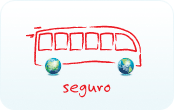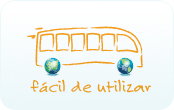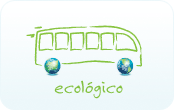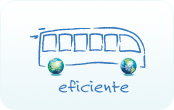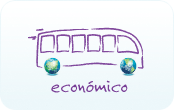|
Página principal  Buenas prácticas Buenas prácticas  Business managers Business managers
Qualité et satisfaction
|
// Driver training | 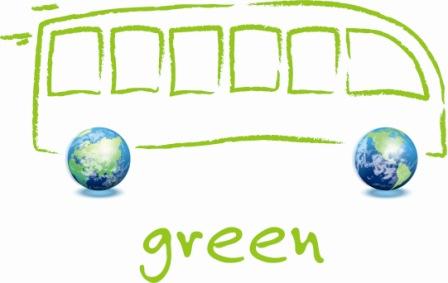 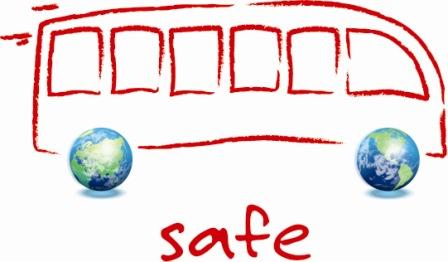 With today’s increasing focus on customer service, company managers and bus/coach drivers must be equipped with the knowledge and skills to adapt to customers’ needs and anticipate the use of technologies that help improve the customers’ experience. In the face of these challenges, the road transport training industry needs an exemplary framework for capacity-building to enhance road safety but also its professionalism, efficiency, effectiveness and accountability. With today’s increasing focus on customer service, company managers and bus/coach drivers must be equipped with the knowledge and skills to adapt to customers’ needs and anticipate the use of technologies that help improve the customers’ experience. In the face of these challenges, the road transport training industry needs an exemplary framework for capacity-building to enhance road safety but also its professionalism, efficiency, effectiveness and accountability.
Example: The IRU Academy, which boasts a high level advisory committee composed of representatives from the European Commission, the World Bank, the UNECE, the International Transport Forum, the European Transport Workers Federation and the European Training Foundation is the training arm of the International Road Transport Union (IRU). The IRU Academy acts as a global body that works with its partners and panels of experts to provide a training framework for the benefit of the road transport industry, its customers and society as a whole. | For more information: Driver program and training, IRU Academy
http://www.iru.org/index/en_academy_index | // Employment of service-oriented bus and coach drivers | 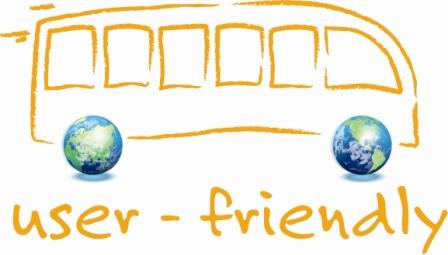 Trent Baron, a British operator, selects bus drivers on the basis of service-orientation.The compagny favours employing people from the service and retail industry over bus drivers, as, in their opinion, the technical part of being a bus driver is easier to train than training employees in customers-oriented behaviour. Trent Baron, a British operator, selects bus drivers on the basis of service-orientation.The compagny favours employing people from the service and retail industry over bus drivers, as, in their opinion, the technical part of being a bus driver is easier to train than training employees in customers-oriented behaviour. | For more information:
The Bus Buddies project, Making Best Practice Stick, Commission for Rural Communities
http://www.ruralcommunities.gov.uk/files/ST11.pdf Busfacts, Institut für Angewandte Wirtschaftsforschung und Regionalanalyse, p.13 | // Making collective/public transport by bus and coachmore lively and attractive |  Live music offered on buses and coaches and at stops increases the “experience” of taking collective/public means of public transport and increases the value added to commuting and travelling by bus and coach. Live music offered on buses and coaches and at stops increases the “experience” of taking collective/public means of public transport and increases the value added to commuting and travelling by bus and coach.
Example: In Graz, numerous local folk music bands play in trams, buses, trains and at stops. A programme informs the travellers about the timetable and location of live music. TV screens showing the latest news, weather forecasts and presenting brief hints for daily life entertain passengers during their trip and waiting time in stations. Example: In Vienna, entrance tickets to major sports events include travel by public transport to and from the event location. Decorating buses seasonally, changing colours and creating an ambiance in the vehicles increases comfort and makes the bus trip a more pleasant experience. Art exhibitions might also take place in collective/public transport. Example: Bus Oceane, Le Havre’s public transport operator has been, in the frame of the “Dell Arte” campaign, commissioning artwork from local artists to decorate buses and illustrate bus tickets. | For more information: Sustainable Urban Transport, Final report from the European project Trendsetter, p.39
http://www.civitas-initiative.org/docs1/CIVITAS_TRENDSETTER_Final_Policy_Report.pdf Dell Arte, Bus Océane
http://www.bus-oceane.com/presentation/index.asp?rub_code=52&thm_id=284&gpl_id “With Wiener Linien to sports”, Wiener Linien
http://www.wienerlinien.at/wl/ep/contentView.do?contentTypeId=1001&channelId=-25929&programId=11054&pageTypeId=9424&contentId=15463 | // Development of night bus services |   Night bus services allow people who go out at night to leave their car at home and return home safely during night. Furthermore, employees who work late or early shifts can also make use of this offer. Night bus services allow people who go out at night to leave their car at home and return home safely during night. Furthermore, employees who work late or early shifts can also make use of this offer.
Example: In 2003, the Belgian city of Ghent introduced night bus services on six routes at 45 minute intervals between 23:30 and 2:30 on Friday and Saturday nights. This service was used by more than twice as many passengers as had been forecast. | For more information: IRU Eurochallenge awarded to Ghent night bus
http://www.iru.org/index/fr_media_press_pr/code.719/lang.en | // Including taxis in the collective transport system |   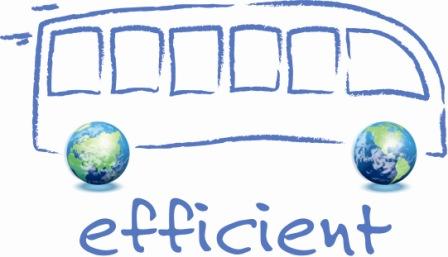 Integrating taxis in the collective transport chain, including in small towns and suburbs, may increase the total number of passengers making use of collective transport, in particular during evening hours. That is why the introduction of on-demand hail-shared taxis, which can be used with the normal ticket for collective means of transport at a reduced price, may motivate more people to use collective transport. Integrating taxis in the collective transport chain, including in small towns and suburbs, may increase the total number of passengers making use of collective transport, in particular during evening hours. That is why the introduction of on-demand hail-shared taxis, which can be used with the normal ticket for collective means of transport at a reduced price, may motivate more people to use collective transport.
Example: Austria has introduced, in various cities and towns, hail-shared taxis. In Vienna, such taxis operate on a couple of bus lines. The taxis serve the bus stations which are marked by a special sticker. The on-demand taxis mostly operate in the evening and during the night, and on some lines also during the day. The public transport ticket in Vienna can be used and the taxi operators are paid an agreed tariff on a kilometre basis by the Vienna operator “Wiener Linien”. The number of passengers using hail-shared taxis ranges from approximately 800 to 13 000 passengers yearly per line, depending on the bus route. This new system allows Vienna citizens to have direct access to collective means of transport, whilst improving cost-efficiency for operators. In the Limburg province in the Netherlands, the multimodal contract (Veolia Transport Nederland) includes urban services in Maastricht and Heerlen, trains, buses and taxis, fixed routes and on-demand services. 240 buses, 24 operator-owned trains and 300 taxis, owned or chartered by the operator, carry some 53 million passengers per year. The taxi option is important and divided into three specific types: taxis on fixed routes or “VKB” (maximum of 8 passengers), “Regiotaxi” with door-to-door services for people who don’t have access to regular public transport (all types of customers) and “Bellbus” which offers on-demand lines from bus stop to bus stop along virtual lines and pre-planned routes. | For more information: Das Taxi im ÖPNV. Richtig eingsetzt. Rund gelöst, Wirtschaftskammer Österreich http://wko.at/taxi/Broschuere.pdf Veolia Transport Nederland http://www.veolia-transport.nl/veolia-transport-netherland/limburg/ | // Promotion of school transport by buses and coaches |   The number of children transported every weekday from home to school is steadily increasing. A study in the UK found that one out of five cars on the streets during morning peak traffic hours is taking children to their educational institutions. As road traffic is the main cause of mortality for children under 15 years old, the awareness of the higher level of flexibility, safety and security of buses and coaches should be resolutely increased, in particular amongst teachers, school children and their parents. The number of children transported every weekday from home to school is steadily increasing. A study in the UK found that one out of five cars on the streets during morning peak traffic hours is taking children to their educational institutions. As road traffic is the main cause of mortality for children under 15 years old, the awareness of the higher level of flexibility, safety and security of buses and coaches should be resolutely increased, in particular amongst teachers, school children and their parents.
Co-operation between schools, governments and local authorities may introduce school bus routes in order to decrease private car transport during peak hours. School transport should also be provided to children who live further away from their school, or in case of special needs/circumstances. Example: In Denmark school transport is provided according to a maximum distance limit. This increases stepwise from 2.5 km for the youngest classes to up to 9 km for older pupils. | For more information: Road safety in school transport, Final report, DG Energy and Transport, EC
http://ec.europa.eu/transport/roadsafety_library/publications/rsst_final_report_v1.3.pdf The BDO BUSSTOP campaign http://www.busstop.de/ | // Co-operation of city tourism authorities and the local tourism industry | 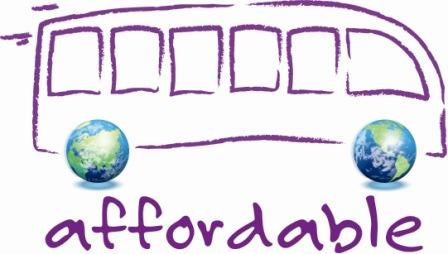  The co-operation of the tourism boards and local tourism industry, such as hotels, tourism sites, catering and public facilities, allows marketing activities of bigger, wider and more intense scope. Participation of tourism authorities together with their local partners, in major travel fairs, conferences and workshops, constitutes not only an important activity to attract new operators, but also fosters already existing partnerships. The co-operation of the tourism boards and local tourism industry, such as hotels, tourism sites, catering and public facilities, allows marketing activities of bigger, wider and more intense scope. Participation of tourism authorities together with their local partners, in major travel fairs, conferences and workshops, constitutes not only an important activity to attract new operators, but also fosters already existing partnerships.
| For more information: Stockholm, Application for the IRU City Trophy
http://www.iru.org/index/cms-filesystem-action?file=event_2009_citytrophy/IRU-CT2009-Stockholm-Application.pdf Leipzig, IRU City Trophy Award 2005
http://www.iru.org/index/cms-filesystem-action?file=en_events_2005/2005_IRUCityTrophyAward-Bewerbung-englisch.pdf | // Branding and improving the transparency of the coach product |   An internationally harmonised star classification system with uniform standards is of benefit to all stakeholders: passengers, travel agents and tour organisers, manufacturers, authorities and, indeed, bus and coach operators, since it increases the transparency of the bus/coach product. An internationally harmonised star classification system with uniform standards is of benefit to all stakeholders: passengers, travel agents and tour organisers, manufacturers, authorities and, indeed, bus and coach operators, since it increases the transparency of the bus/coach product. Establishing a global industry brand to condense the industry offer into a recognisable product across the board has the potential of attracting additional consumers to coach and bus services, since customers tend to base their choice predominantly on price and brand. Example: The International Road Transport Union introduced an international classification system for tourist coaches, ranging from one star coaches to four star luxury touring coaches. In Belgium, where the system has been in application since the 1980s, the fleet of Belgian tourist coaches has improved considerably over the years. - The number of 4-star coaches has increased from 0.5% to 12-13% today.
- The number of 3-star coaches has increased from 10% to 55-60%.
| For more information: IRU Coach Star Rating, http://www.iru.org/index/en_services_coach_star | // Tiramisu
|   Tiramisu, a new iphone application, allows bus riders in Pittsburgh, USA,to track their current location while riding the bus and, in turn, share this information with people who are still waiting, thereby creating a more complete map and schedule of bus routes and times. Tiramisu, a new iphone application, allows bus riders in Pittsburgh, USA,to track their current location while riding the bus and, in turn, share this information with people who are still waiting, thereby creating a more complete map and schedule of bus routes and times. The app requires that the rider activate the tracker in order to see when the next bus is due to arrive as well as its current “fullness", which can be registered by riders. When he or she boards, the application sends the bus’ location to the main server so other riders can tell where that particular bus is and when it will arrive. This same data can eventually be used by the city or county transit authorities to improve travel times and inform riders of slow buses. It allows cash-strapped transit systems to add GPS functionality to their lines. “While better funded transit systems, such as those in Chicago, Seattle and San Francisco, can afford to make GPS-based information available to riders in real-time, the Allegheny County system is under tremendous budget pressure,” Steinfeld said. “Under such circumstances, a free, crowdsourced system such as Tiramisu offers an important alternative.” | For more information:
Download tiramisu ? http://techcrunch.com/2011/07/28/kiss-me-on-the-bus-this-app-crowdsources-bus-locations/ | | |
|
|
|
|
|
|
|
